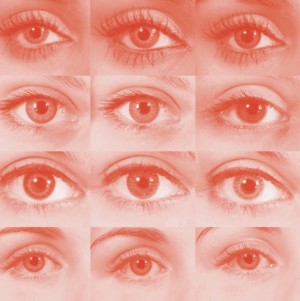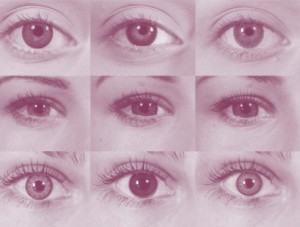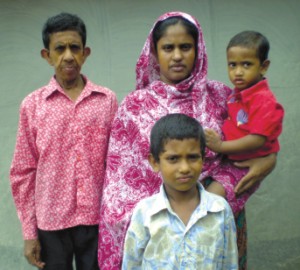| Health
The Pink Eye Problem
 What is conjunctivitis? What is conjunctivitis?
Conjunctivitis is an inflammation of the conjunctiva, the mucous membrane that lines the eyelids and covers the white of the eyeball. Symptoms of conjunctivitis include redness, discharge, burning, and sometimes itching and light sensitivity. It can occur in one eye or both.
What causes conjunctivitis?
The most common cause of conjunctivitis is a viral infection. Other causes include seasonal allergies, bacterial infection, and reactions to eye medications.
How is conjunctivitis transmitted?
Viral conjunctivitis can be transmitted from one person to another by casual contact, sharing towels or pillow cases, facial contact, or sharing of cosmetics. It can occur before, during, or after a cold or upper respiratory infection because the same virus which causes the cold can cause a conjunctivitis. Viral conjunctivitis is very contagious in the first 10-12 days and may last up to 2-3 weeks.
Allergic conjunctivitis usually occurs in the spring and summer and is not contagious. It causes itching in addition to redness and tearing. It is caused by allergies to pollens from plants.
Bacterial conjunctivitis, like viral conjunctivitis, is contagious. Most people who develop bacterial conjunctivitis, also have other eye conditions such as dry eyes or inflammation of the eyelids (blepharitis). There is a sexually transmitted type of conjunctivitis, called chlamydial conjunctivitis, which often produces symptoms of long duration (>4 weeks).
 What precautions should I take when I have conjunctivitis? What precautions should I take when I have conjunctivitis?
The most important precaution is to be extremely strict with handwashing. Always wash hands with soap and water before and after touching the eyes. Avoid any facial contact with others while you are having symptoms. Don't let others use your personal articles such as towels, pillows, or cosmetics. If you are a contact lens wearer, you should not wear contact lenses while you have any symptoms. People who provide healthcare, food services, or education should not work until their eyes feel and look normal because of the risk of spreading the infection to others.
What is the basic therapy and treatment?
Treatment varies depending on the specific cause of conjunctivitis. For viral conjunctivitis using a cool wet cloth 3-4 times a day and applying artificial tears will relieve the symptoms. If there is a suspcicion of bacterial conjunctivitis antibiotic drops or ointment are usually given. Allergic conjunctivitis may be relieved by over the counter medications such as Naphcon A or by prescription medications such as Livostin or Patanol.
If you have pain, decreased vision, or a strong light sensitivity associated with your symptoms of a red eye, you are likely to have a condition more serious than conjunctivitis. In this circumstance you should see an ophthalmologist, a medical doctor who specialises in medicine and surgery of the eyes immediately.
The Aging Disease
Dr A B M Abdullah
Tuhin, a 6-year-old student attending a primary school in his village, was always confronted with the question: “How old are you?” His teachers and peers alike would be dumbfounded when he answered that he was 6. Everyone would laugh and say, “Are you 6 or 16?”
Since birth, Tuhin's parents noticed his wrinkled appearance and fragile bone structure but due to their state of poverty had not sought any medical help. They had envisioned him looking like a normal boy as he grew. However, with increasing age, he progressively looked older and older.
 |
| 12-year-old Tuhin Islam (extreme left) with his mother Taslima Begum and two younger brothers. |
According to this case history and examination, Tuhin appears to be a very rare case of the genetic disease known as “Progeria”.
The word progeria is derived from the Greek word 'progeros' meaning 'prematurely old'. It is also known as “Hutchinson Gilford progeria syndrome". The syndrome is named after the two scientists who first described the condition in the year 1886.
Until recently the exact cause as to why these children aged prematurely was not known. However, in 2003, the gene LMNA was isolated. This codes for the protein Lamin A, which is important for the stability of the nuclear envelope. A point mutation of the LMNA gene in one of the gametes during fertilisation results in the production of the defective protein Lamin A (now known as progerin). On a molecular level, this results in a misshapen nucleus which is responsible premature aging symptoms. Research is still being carried out into the actual mechanism of the abnormal protein progerin that results in these symptoms.
In infancy, the primary symptom is failure to thrive but within 18 to 24 months, the child develops wrinkled skin, alopecia, small fragile bones and a distinctive appearance (small face and jaw, a pinched nose). Additionally at a very young age, complications of advanced atherosclerosis develop and lead to cardiovascular and cerebrovascular incidents. These children usually survive to the age of 12-13 years and die from ischaemic events like a massive heart attack.
Currently, there are about 67 known living cases of progeria, the oldest survivor being 25 years old. Tuhin is the first known case of progeria in Bangladesh to date.
In 1998, the Progeria Research Foundation was established. It not only provides support to all the children and their parents, but is also involved in research.
Treatment is limited to preventing complications of cardiovascular disease by bypass surgery. No proven effective treatment has been found.
Hence it is important that as clinicians we provide the medical, psychological and social support to these patients and their families.
The writer is Professor of Medicine, Bangabandhu Sheikh Mujib Medical University, Dhaka.
Copyright
(R) thedailystar.net 2010 |
